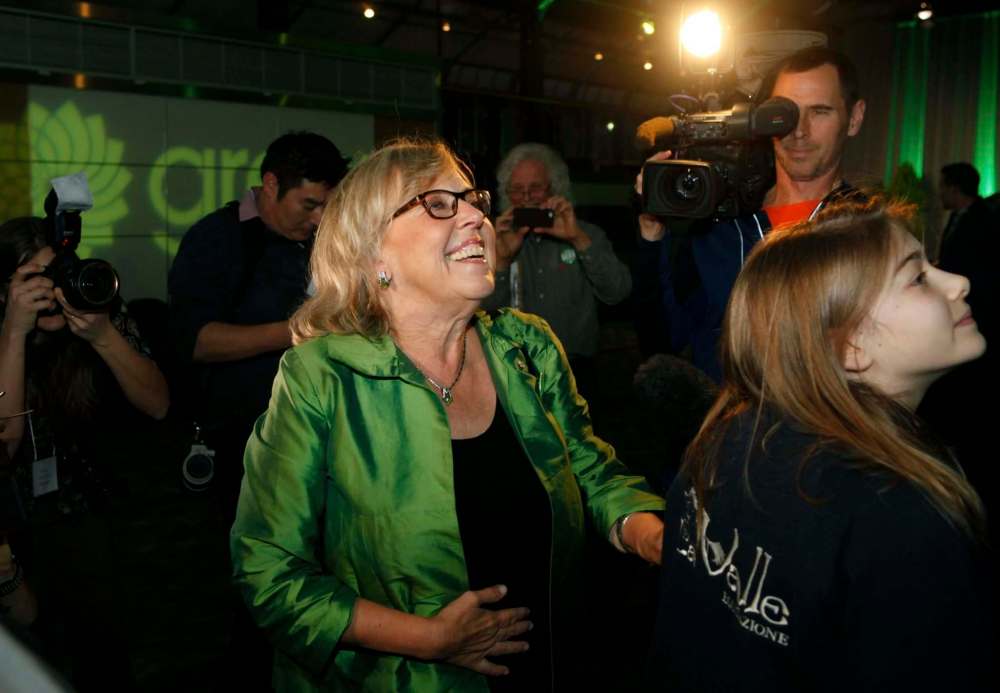Greens’ frustration highlights electoral system flaws
Advertisement
Read this article for free:
or
Already have an account? Log in here »
To continue reading, please subscribe:
Monthly Digital Subscription
$1 per week for 24 weeks*
- Enjoy unlimited reading on winnipegfreepress.com
- Read the E-Edition, our digital replica newspaper
- Access News Break, our award-winning app
- Play interactive puzzles
*Billed as $4 plus GST every four weeks. Offer only available to new and qualified returning subscribers. Cancel any time.
Read unlimited articles for free today:
or
Already have an account? Log in here »
Hey there, time traveller!
This article was published 29/10/2019 (1953 days ago), so information in it may no longer be current.
For an election that was sometimes described as being about “nothing,” it turned out to be an important one for climate change policy and the environment.
In the weeks leading up to the federal election, hundreds of thousands of people, stirred up by teenage activist Greta Thunberg, marched through the streets in Canada in support of action on climate change. The turnout reflected the fact that public opinion polling consistently showed that the environment, and more specifically climate change, was a top issue for Canadians.
All the party leaders, except Andrew Scheer and Maxime Bernier, joined the marchers to highlight their commitments to action on climate change. The Greens may have hoped the momentum might buoy them to a strong election outcome, perhaps even official party status.

Even though the election provided the Greens with what was in some ways their best outcome ever, in the end they fell short, leaving a complicated landscape ahead.
Widespread support but not seats
The Greens obtained nearly 1.2 million votes — the greatest number in the party’s history — and 6.5 per cent of the popular vote, falling slightly short of their 2008 record.
But support for the Greens, which is widely distributed across Canada, is notoriously inefficient at being translated into seats. That reality proved true again in this election.
The Greens held on to two seats in British Columbia and beat out a Liberal incumbent in New Brunswick — their best showing yet. But three seats is not enough for official party status in the House of Commons.
Strategic voting hurts Greens, saves Liberals
The Greens have held the balance of power in British Columbia’s NDP-minority government since 2017. But with the number of Liberal and NDP seats totalling 181 at the federal level, the Greens may have only limited influence on Trudeau’s minority government.
The Greens, however, can claim success in other ways.
Their polling numbers remained consistent — around 10 per cent — until the final weekend of the campaign. This forced the other progressive parties, particularly the Liberals and the NDP, to shore up the environment and climate change dimensions of their platforms, including more ambitious climate change targets, to avoid losing potential voters to the Greens.
In Ontario, voters made last-minute decisions to back Trudeau’s government and block a potential Conservative victory. Those choices came at the expense of the NDP, and to a lesser extent the Greens, particularly in the Greater Toronto Area.
The resulting electoral map looks surprisingly similar to the outcome of the 2014 provincial election. The Liberals and NDP split northern Ontario and the cities and towns in the south, while the Conservatives were left with their traditional southern and central rural Ontario base. The outcome reinforces the argument that Ontario Premier Doug Ford’s 2018 election victory was an aberration, and one that Ontario voters didn’t want to risk repeating at the federal level.
What’s next?
The Green’s presence in the election, and particularly leader Elizabeth May’s role in the leaders’ debates, was instrumental in keeping climate change and environmental issues at the forefront of the campaign.
Some, including May, argue that outcome is more important than seat counts. It may also be, under Canada’s first-past-the-post electoral system, the best the Greens can hope for for the time being.
The election again highlighted how badly the current system works for smaller parties whose support, however substantial, is widely distributed across the country. The Bloc Québécois earned 1.2 per cent more of the popular vote than the Greens. But with its support concentrated entirely in Québec, the Bloc emerged with 32 seats compared to the Greens’ three.
In an age when the regional divisions in Canada seem to be deepening, the need to move to a system that rewards support across the nation and is less favourable to parties rooted in regional grievance seems more urgent than ever.
Both major parties have emerged from this federal election thinking the existing system has worked in their favour. This makes the prospects for reform, once part of the 2015 Liberal platform, seem even further out of reach.
Mark Winfield is a professor of environmental studies at York University.
This article was first published at The Conversation Canada: theconversation.com/ca.



